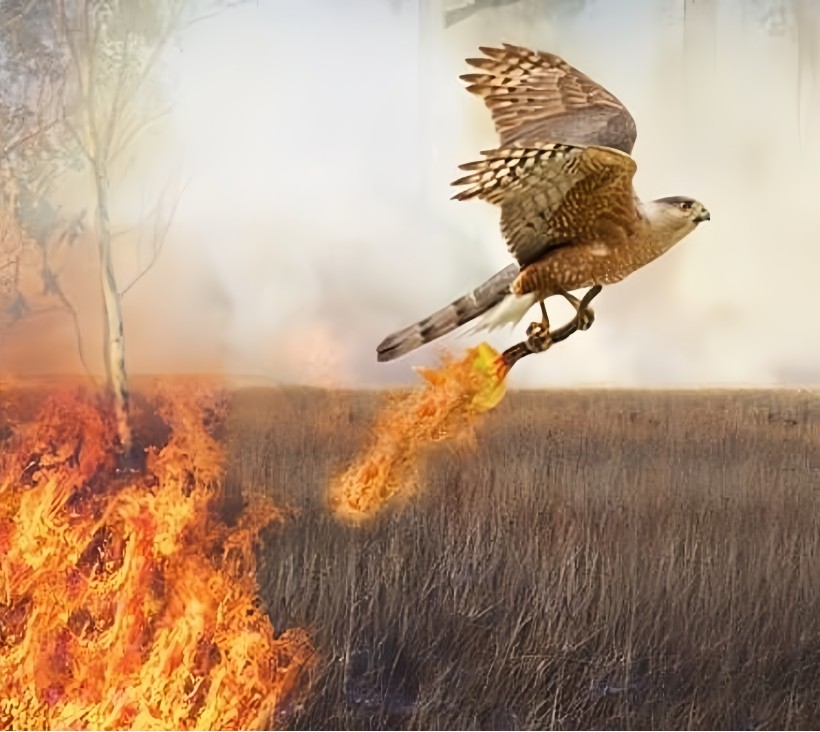In the dry, open landscapes of northern Australia, several species of raptors — most notably the Black Kite (Milvus migrans), Whistling Kite (Haliastur sphenurus), and Brown Falcon (Falco berigora) — have been observed doing something almost unthinkable: spreading fire.
Local Aboriginal communities have long spoken of “firehawks” — birds that pick up smoldering sticks from bushfires and drop them into unburnt grass to flush out prey. Recent research and eyewitness accounts have confirmed this behavior: raptors intentionally carry burning branches in their talons or beaks, then release them in new areas, starting fresh blazes.
Why? Because fire means opportunity.
As the flames spread, insects, lizards, small mammals, and other prey flee from the smoke. The hawks swoop down, snatching up the chaos. Sometimes, multiple birds will follow a blaze together, competing for the spoils in a dangerous, calculated hunt.
This is not random behavior — it’s learned, repeated, and passed on. And it blurs the line between animal instinct and strategy. These birds don’t fear fire. They use it.
Intelligent. Opportunistic. Arsonists of the sky.
This bird rewrites the rules of hunting — with smoke, ash, and wings.
